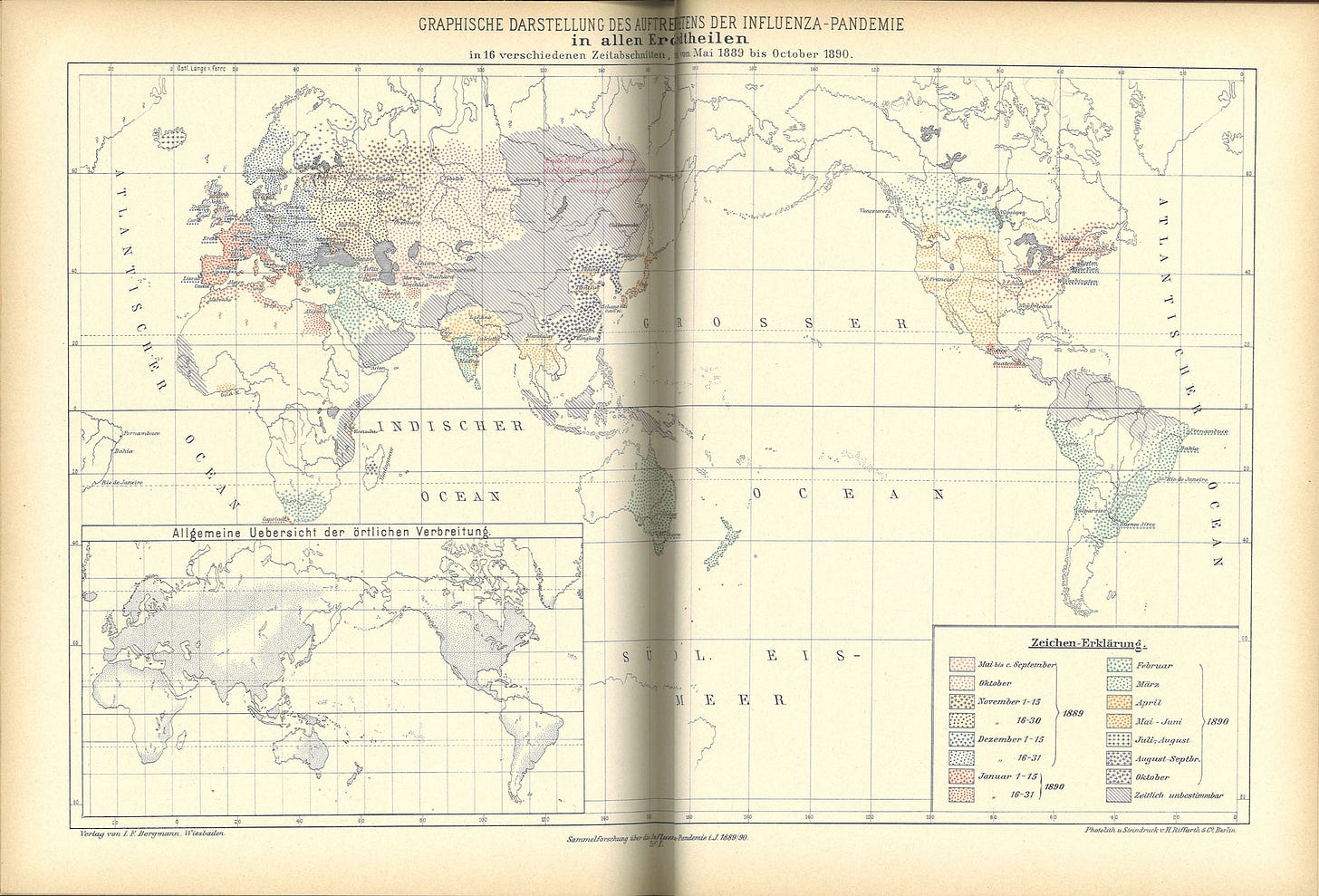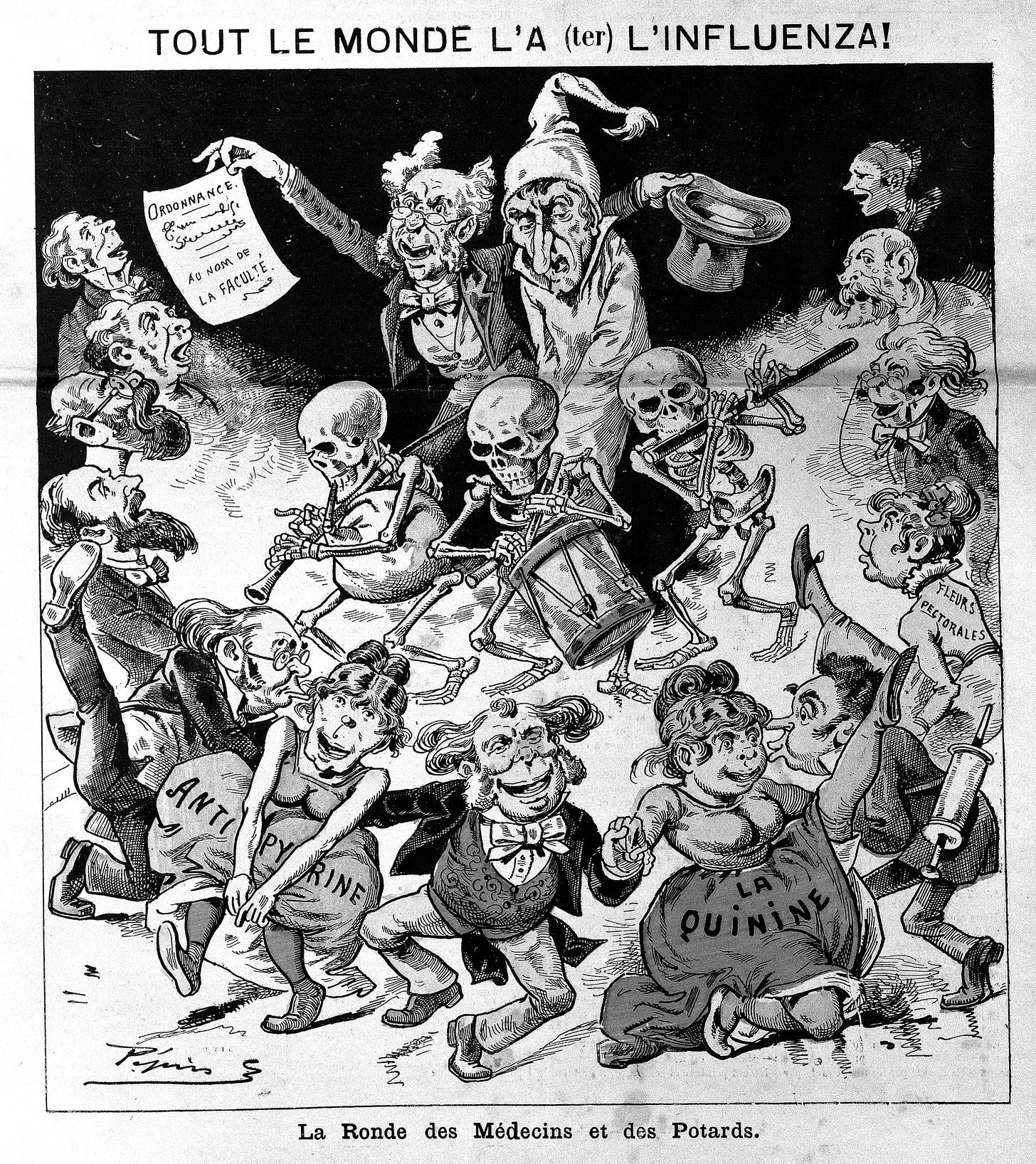Disclaimer: This does not constitute medical advice (it is a debate piece). Consult with a medical professional regarding any health issues you may have.
Most people have heard of how SARS-CoV-2 spike proteins bind to ACE-2 receptors. Not as common in media, is the mention of CD147.
CD147 (Basigin; cluster of differentiation 147) is one of indirect routes used by SARS:
Although none of the SARS-CoV proteins was found to be directly bound to HAb18G/CD147, the nucleocapsid (N) protein of SARS-CoV was bound to CyPA, which interacted with HAb18G/CD147.
This indirect route is also used by SARS-CoV-2:
The loss of CD147 or blocking CD147 in Vero E6 and BEAS-2B cell lines by anti-CD147 antibody, Meplazumab, inhibits SARS-CoV-2 amplification.
CD147 regulates ACE2 levels and both receptors are affected by virus infection […]
To oversimplify CD147, it is a sort of immune system regulator, dealing with cytokines.
It was shown in mice that an aCD147 (anti-CD147) treatment reduced the expression of TNFα (tumor necrosis factor alpha), IL-6 (Interleukin 6) and IL-1β (Interleukin 1 beta):
[…] inhibited by αCD147 treatment as demonstrated by the reduced expression of cytokines (TNFα, IL-6, IL-1β) […]
From this we can infer CD147 controls TNFα, IL-6, and IL-1β.
Similar To Other Treatments
So, it’s a lot of jargon to take onboard. The virus (SARS-CoV-2), interacts with an immune system pathway (CD147), that in turn triggers an immune system response (TNFα, IL-6, IL-1β).
IL-6 inhibitors have been used in people suffering from autoimmune disorders, one example being tocilizumab:
Blockade of IL-6 by the neutralising monoclonal antibody tocilizumab has been approved in more than 100 countries for the treatment of patients with autoimmune disorders such as rheumatoid arthritis […]
If the name sounds familiar, it was mentioned in the UK government’s REMAP-CAP study for drugs on SARS-CoV-2, which remarked:
Results from the government-funded REMAP-CAP clinical trial published today showed tocilizumab and sarilumab reduced the relative risk of death by 24%, when administered to patients within 24 hours of entering intensive care.
Sarilumab is another IL-6 inhibitor. So the inference we’re getting here is if we suppress CD147 mediated cytokine responses, the odds of survival from SARS-CoV-2 improves.
Enter Quinine
Quinine comes from chichona bark, from the aptly named ‘fever tree’, for it treated fevers. It pre-dates the claims from hacks that it only treats malaria. You may be more familiar with Quinine’s brothers: Chloroquine, and Hydroxychloroquine.
Chloroquine is a synthetic substitute of Quinine, and Hydroxychloroquine is an analogue variant of Chloroquine, designed to combat malarial resistance to Chloroquine — although this would also likely translate to other forms of anti-resistance too.
Critics of the drug have made the false equivalence that because Quinine (and Chloroquine, Hydroxychloroquine) are used to treat malaria, this is all it can be used for, but this is simply false. Many drugs are multi-role: tocilizumab is used to treat rheumatoid arthritis, yet, now also used to treat SARS-CoV-2.
Quinine’s Historical Use
This isn’t the first time Quinine has been used successfully in a pandemic. In-fact, the usage of Quinine in pandemics pre-dates the usage of Chloroquine and Hydoxychloroquine for anti-malaria.
In 1889, an outbreak of what’s known as the ‘Russian flu’ occurred. It made Spanish flu look tepid in comparison. ‘Russian flu’ was considered one of the deadliest pandemics of that century, even spreading across the world, a proverbial SARS-CoV-2 outbreak if you will, minus the labs.
Furthering the comparison to SARS-CoV-2, it is believed ‘Russian flu’, was Human Coronavirus OC43. Like most pandemics, viral evolution pressures it to become weaker so the host lives longer, in order to spread further. OC43 is now just a simple common cold that affects children. Within 4 years the pandemic was gone, like most pandemics.
The illustration is of a biting satire on the French government’s response to ‘Russian flu’ (simply called ‘the influenza’ [l’influenza] in this image).
In the bottom, it depicts the rich celebrating with two raunchy women — ‘anti-pyrine’ (anti-fever), and ‘la Quinine’ (lit. the Quinine) — berating the fact the rich could afford these modern treatments, whilst the poor were given ordnances (control measures, top-left) and left to face the drumbeat of death.
Strikingly similar to current times, no?
How Quinine Works
You weren’t just brought here to look at some old time cartoon, however.
Quinine is a K channel blocker:
[…] a K channel blocker, quinine […]
The same study found Quinine inhibits TNFα:
[…] quinine, at concentrations required to inhibit K channels, specifically blocks TNF-alpha production of human alveolar macrophages at the level of gene transcription […]
K represents potassium. K channel also handles ‘pro-inflammatory’ responses.
Quoting another study, K channel also controls IL-1β:
The observed K+ channel inhibitor-dependent attenuation of IL-1β secretion further establishes the important role of these channels in regulating this pro-inflammatory process.
So, if Quinine impacts K channel, it also impacts IL-1β.
Channel inhibition of K channel Kv1.3 is shown to reduce IL-6 and TNF:
[…] decreases IL-6 and tumor necrosis factor secretion by adipose tissue.
We can therefore infer mechanistically, K channel blockers — like Quinine — can reduce TNFα, IL-6 and IL-1β. All of the cytokines which are increased by SARS-CoV-2 interactions with CD147.
As it so happens, Plasmodium falciparum malaria — the parasite that Quinine, Chloroquine and Hydroxychloroquine was used to treat — causes higher levels of TNF-α, IL-6 and IL-1β, amongst other cytokines:
Significantly elevated levels of IL-6 […] were seen in severe malaria cases versus uncomplicated malaria controls.
Reverse transcriptase-PCR postmortem analysis of human brain tissue in patients who succumbed to cerebral malaria demonstrates expression of TNF-α and IL-1β
It therefore makes sense these drugs — Quinine, Chloroquine and Hydroxychloroquine — play interactive roles with these cytokines, as they are used to treat malaria that causes much the same cytokine issues.
Quinine’s Brothers Work Similarly
We can reinforce this further by showing Quinine’s ‘brothers’ — Chloroquine and Hydroxychloroquine — exhibit similar properties, although they don’t work exactly the same.
Out of the three (TNFα, IL-6 and IL-1β), Hydroxychloroquine was shown to inhibit IL-6 (much like the IL-6 inhibitors sarilumab and tocilizumab):
Hydroxychloroquine inhibited production of IL-1-alpha (monocytes) and IL-6 (T cells and monocytes).
But the same study claims it did not impact TNFα:
[…] IL-2, IL-4, TNF-alpha and IFN-gamma production were not affected […]
Another study that looked explicitly at the fact Chloroquine and Hydroxychloroquine both treat rheumatoid arthritis (again, like tocilizumab is used to treat rheumatoid arthritis).
It found not only did both inhibit IL-6, but they also inhibited TNFα:
We observed that chloroquine and hydroxychloroquine equally inhibit PHA induced TNF-alpha and IFN-gamma production, and LPS induced TNF-alpha and IL-6 production, while PHA induced IL-6 production was not affected.
Another study, titled “Hydroxychloroquine inhibits IL-1β production from amyloid-stimulated human neutrophils”, found Hydroxychloroquine inhibited IL-1β.
Chloroquine (CQ) was found to behave similarly (emphasis added):
CQ attenuated NF-κB and MAPK activation and prohibited expression of IL-1β, IL-18, and Nlrp3 in LPS treated murine bone marrow-derived macrophages (BMDMs)
Another study found Chloroquine reduced IL-6 and TNFα:
[…] chloroquine decreased the numbers of activated HLA-DR+ cells in the skin of those with systemic lupus erythematosus and reduced the elevated levels of the proinflammatory cytokines, interleukin (IL)-6, IL-18, and tumor necrosis factor-a in plasma […]
It is evident, then, that Quinine (and, by indirection, Chloroquine, Hydoxychloroquine) play important mechanisms regulating the human immune system, preventing cytokines from overwhelming the body.
Related Observations
These next observations don’t relate to Quinine, but they’re worth noting in the wider context of cytokines, CD147 and SARS-CoV-2.
Ibuprofen is described as an ‘anti-inflammatory’ (non-steroidal anti-inflammatory drugs; NSAIDs), however one study in newborns found it increased IL-6 and TNFα:
The mononuclear cells from the two groups responded to IB [Ibuprofen] by an increased secretion of IL-6 and TNF-alpha and by a reduced production of IL-10.
Curiously, it is used to treat rheumatoid arthritis.
One study suggested antibiotic Azithromycin interacts with, and inhibits CD147:
Studies suggest beneficial effects of azithromycin in reducing viral load of hospitalized patients, possibly interfering with ligand/CD147 receptor interactions […]
However it appears to be the only study making this remark and The Daily Beagle could not find any additional evidence. We invite readers to investigate further for either CD147 or cytokine interactions. It is worth noting antibiotics are typically used to clear secondary bacterial infections.
We did however find a study proposing 7 possible alternative CD147 inhibitors, identifying 7 possible drugs, which we’ve listed for convenience:
Irinotecan
Abemaciclib
Estradiol benzoate
Capmatinib
Olaparib
Lumacaftor
Pazopanib
We won’t dive into those drugs in this article, as the focus is on defending Quinine, but it shows CD147 is an important enough issue for drugs to be investigated for it.
When Should Quinine Be Used?
A discussion suggests in the later stages of SARS-CoV-2, treatment strategies should focus on managing the cytokines:
Later on, in selected patients, therapies targeting proinflammatory cytokines could suppress hyperinflammation, while some cytokines (IL-7) could theoretically trigger immune restoration.
This makes sense. You don’t want to hobble the immune system too early, as that combats the virus. In later stages, when the immune system is likely to be too aggressive, damaging the host more than the virus, you want to calm it down.
This explains why IL-6 inhibitors have to be used at later stages, in critical care (emphasis added):
Results from the government-funded REMAP-CAP clinical trial published today showed tocilizumab and sarilumab reduced the relative risk of death by 24%, when administered to patients within 24 hours of entering intensive care.
Conclusion
Contrary to all the profiteering detractors who want proprietary drug formulas to succeed at the expense of generic public domain formulations, Quinine (and Chloroquine, Hydroxychloroquine), have a clearly evidenced mechanism and role in SARS-CoV-2 treatment.
Not only does SARS-CoV-2 interact and interfere with CD147, impacting and increasing TNFα, IL-6 and IL-1β, but Quinine, Chloroquine and Hydroxychloroquine clearly and evidently regulate these cytokines, preventing a pro-inflammatory response, contrary to the unevidenced remarks it has no functional mechanism.
A failure to look does not mean it does not exist. Quinine therefore retains a place in the podium of treatment.
Subscribe to get more content from The Daily Beagle.
Share and let the whole world know Quinine works!
And feel free to discuss in the comments:







A fascinating read. There's no money to be made from these time-proven drugs so they get suppressed. Cytokine management is always an interesting topic. Managing inflammation is key to making it through an agressive infection. Its rather mind blowing how nature provides a solution but the "crafted" treatment is what is pushed. Ventilators and remdesivir over HCQ and Ivermectin. You know the fix is in when doctors are being prosecuted for prescribing off-label.
Quinine in the form of concentrated Tonic mix (to be added to soda water) has been in my staple cold/flu treatment mix for years.
And it works, seems my body is particularly responsive to this quinine hit when attacked by viruses. I can actually feel it working to reduce the aches and fever.
If you can't handle a dose of the conc stuff, normal, decent quality Tonic is palatable, and effective, but I find I need about 500ml of Normal tonic vs 1 shot of conc tonic.